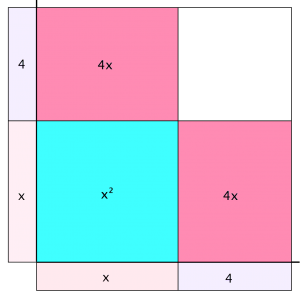Here is a persuasive advertisement for ghostwriting services for De Moivre’s theorem:
**Unlock the Secrets of De Moivre’s Theorem with Our Expert Ghostwriting Services**
Are you struggling to grasp the complexities of De Moivre’s theorem and its applications in algebra and geometry? Do you need help with writing a clear and concise essay or assignment that showcases your understanding of this fundamental concept?
Look no further! Our team of expert ghostwriters specializes in crafting high-quality, plagiarism-free content on De Moivre’s theorem and its applications. With our services, you can:
* Get a deep understanding of trigonometric identities and their relationships with algebra and geometry
* Receive expertly written essays, assignments, and research papers that showcase your knowledge and skills
* Save time and effort by letting our experts handle the research and writing for you
* Enjoy peace of mind knowing that your work is original and tailored to your specific needs
Our ghostwriting services cover a range of topics related to De Moivre’s theorem, including:
* Theoretical foundations of De Moivre’s theorem
* Applications in algebra, geometry, and trigonometry
* Examples and formulas for solving complex problems
* Historical context and significance of De Moivre’s theorem
What sets us apart?
* Our team of experts holds advanced degrees in mathematics and related fields
* We use the latest research and academic resources to ensure accuracy and relevance
* We prioritize originality and tailor our content to your specific needs and requirements
* We deliver high-quality work on time, every time
Don’t let De Moivre’s theorem hold you back from achieving academic success. Trust our expert ghostwriting services to help you unlock the secrets of this fundamental concept. Order now and get the grades you deserve!
\[(\cos\theta+i\sin\theta)^{n}=\cos n\theta+i\sin n\theta,\quad(\theta\in\mathbb{ R})\]
which is a compact expression for a family of trigonometric identities. For example, in view of the binomial theorem one can show:
\[\cos 5\theta=\cos^{5}\theta-10\cos^{3}\theta\sin^{2}\theta+5\cos\theta\sin^{4 }\theta.\]
Also for \(z=re^{i\theta}\neq 0\), we have \(\frac{1}{z}=r^{-1}e^{-i\theta}\).
**Example 97**.: If \(z=1+i\), then \(\left|z\right|=\sqrt{2}\) and \(z\) lies in the first quadrant on the line \(y=x\). Hence \(z=\sqrt{2}\,e^{i\,\frac{\pi}{4}}\) and \(\frac{1}{z}=\frac{1}{\sqrt{2}}e^{-i\,\frac{\pi}{4}}\).
The fundamental theorem of algebra above guarantees that a polynomial of degree \(n\) with coefficients in \(\mathbb{C}\) has \(n\) roots (not necessarily distinct, of course). Let us consider the equation \(z^{n}=1\); using polar form of \(z=re^{i\theta}\), we must have:
\[z^{n}=1\Longleftrightarrow r^{n}e^{ni\theta}=1\Longleftrightarrow r=1,\quad \cos n\theta+i\sin n\theta=1.\]
Thus the distinct roots of the equation \(z^{n}=1\) are given by
\[e^{\frac{2k\pi i}{n}}\quad\text{for}\quad k=0,1,\dots,n-1.\]
These numbers are known as the \(n\)th _roots of unity_. Observe that the roots of \(z^{n}=1\) lie at the vertices of a regular \(n\)-gon centered at \(0\) with one vertex at \(1\) (Figure 3.12).
The first picture on the left is the cube roots of unity and
\[z^{3}=1\Longleftrightarrow z=\omega^{3}=1,\quad\text{or}\quad z=\omega=e\frac{2 \pi i}{3}\quad\text{or}\quad z=\omega^{2}=e\frac{4\pi i}{3}.\]
The picture on the right represents the sixth roots of unity.
Two special cases are worth mentioning. We have:
\[z^{4}=1\Longleftrightarrow(z^{2}-1)(z^{2}+1)=0\Longleftrightarrow z=\pm 1 \quad\text{or}\quad z=\pm i\]
and the geometric identity
\[(1-z)(1+z+z^{2}+\cdots+z^{k})=1-z^{k+1}\]
is valid for all \(z\in\mathbb{C}\) and for all natural numbers \(k\). For example, if we set \(k=2\), we obtain
\[(1-z)(1+z+z^{2})=1-z^{3},\]
which gives the cube roots of unity which we calculated before. Therefore, the roots of the equation \(1+z+z^{2}=0\) are exactly the non-real cube roots of unity, that is \(\omega\) and \(\omega^{2}\).
##### Inequalities
The following are some important inequalities that link modulus and addition.
**Proposition 40**.: _For all \(z\) and \(w\) in \(\mathbb{C}\),_
* \(|\text{Re}\,z|\leq|z|\) _and_ \(|\text{Im}\,z|\leq|z|\)_._
* \(|z+w|\leq|z|+|w|\) _(the triangle inequality)._
* \(|\,|z|-|w|\,|\leq|z+w|\)_._
Proof
: Part a) is clear since \(|z|^{2}=(\text{Re}\,z)^{2}+(\text{Im}\,z)^{2}\) and \(|z|\geq 0\). We leave it to the reader to prove part b). For c) all we need is that the following two inequalities hold:
\[|w|-|z|\leq|z+w|\quad\text{and}\quad|z|-|w|\leq|z+w|.\]
Figure 3.12: Left: cube roots of unity, Right: sixth roots of unity
Using the triangle inequality we have
\[|w|=|z+w-z|\leq|z+w|+|-z|\]
and
\[|z|=|z+w-w|\leq|z+w|+|-w|,\]
so c) follows.
**Remark.** All of the inequalities given above are between real numbers (\(\operatorname{Re}z\), \(|z|\) etc.). Note that there is no meaning assigned to an inequality \(z\leq w\). In fact it is not possible to define an ordering on \(\mathbb{C}\). Suppose such an ordering exists, then
\[i\geq 0\quad\text{implies}\quad(i)(i)\geq 0,\quad-1\geq 0\]
or
\[i\leq 0\quad\text{implies}\quad(-i)(-i)\geq 0,\quad-1\geq 0,\]
contradicting the order axioms.
### The Riemann Sphere
The extended complex plane, which consists of \(\mathbb{C}\) and the point at \(\infty\), has a convenient interpretation which we now explain. Consider the Euclidean space \(\mathbb{R}^{3}\) with coordinates \((x,y,z)\) where the \(xy\)-plane is identified with \(\mathbb{C}\). We denote by \(\mathbb{S}\) the sphere centered at \((0,0,1/2)\) of radius \(1/2\). In other words,
\[\mathbb{S}=\{(x,y,u):\quad x^{2}+y^{2}+(u-1/2)^{2}=1/4\}.\]
This sphere is the _Riemann sphere_ which touches the plane \(\mathbb{C}\) at the point \((0,0,0)\). Let \(N=(0,0,1)\) be the north pole of the sphere. Given any point \(z^{\prime}=(x,y,u)\) on \(\mathbb{S}\) different from the north pole, the line joining \(N\) to \(z^{\prime}\) intersects the \(xy\)-plane at a single point denoted by \(z=x+iy\). We call \(z\) the _stereographic projection_ of \(z^{\prime}\) (Figure 3.13).
Figure 3.13: Stereographic projection
Conversely, given any point \(z\in\mathbb{C}\), the line joining \(N\) to \(z\) intersects the sphere at \(N\) and another point which we call \(z^{\prime}\). Thus, there is a bijective correspondence between points of \(\mathbb{S}\setminus N\) and the complex plane \(\mathbb{C}\). The problem of the north pole being left out can be handled by adding an extra point \(\infty\) to \(\mathbb{C}\). We define the _extended complex plane_
\[\tilde{\mathbb{C}}:=\mathbb{C}\cup\infty.\]
We then have the natural correspondence between \(\tilde{\mathbb{C}}\) and \(\mathbb{S}\) by
\[z=x+iy\longleftrightarrow z^{\prime}=\left(\frac{x}{1+r^{2}},\frac{y}{1+r^{ 2}},\frac{r^{2}}{1+r^{2}}\right)\]
where \(r^{2}=x^{2}+y^{2}\) and under this bijection \(\infty\longleftrightarrow(0,0,1)=N\).
### Exercises
1. Prove that \(\ \frac{1}{i}=-i\\) and that \(\ \frac{1}{i+1}=\frac{1-i}{2}\\).
2. Let \(z_{1}=2+i\), \(z_{2}=3-2i\\) and \(\ z_{3}=-\frac{1}{2}+\frac{\sqrt{3}}{2}\,i.\) Evaluate:
a) \(|3z_{1}-4z_{2}|\), b) \({z_{1}}^{3}-3{z_{1}}^{2}+4z_{1}-8\), c) \(\frac{z_{1}}{z_{2}}\), d) \((\overline{z_{3}})^{4}\).
3. Find real numbers \(x\) and \(y\) such that

发表回复